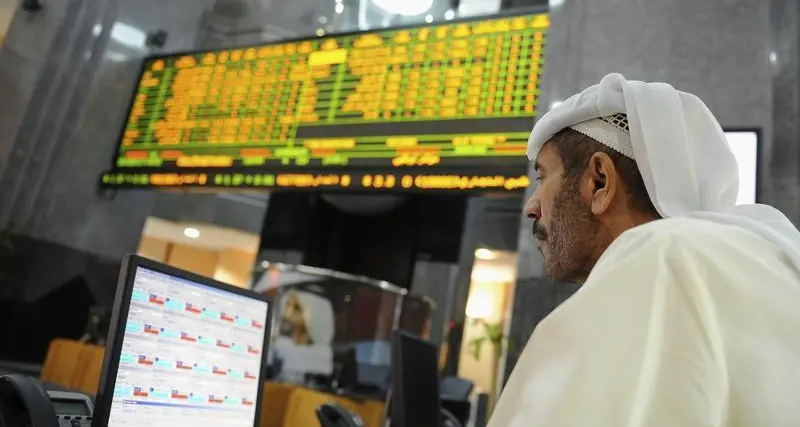PHOTO
21% of the 62 largest listed Middle East corporates saw a new CEO take the helm with Saudi Arabia at a very high rate of 38,5% in 2015
In 2015, 17 percent of the largest 2500 public companies in the world changed their CEO, more than in any of the previous 16 years of the CEO Success Study from Strategy&, formerly Booz & Company, part of the PwC network. Over the past several years more big companies have been deliberately choosing their new CEO from outside of the company as part of a planned succession, an indication that hiring an outsider has become more of an intentional leadership choice than a necessity.
· Outsiders accounted for 22 percent of all CEOs brought in via a planned succession between 2012-2015, up from 14 percent in 2004-2007
· Almost three-quarters of all outsider CEOs were brought in during planned successions during that same period, up from 43 percent in 2004-2007
The majority of companies have continued to promote insiders to the CEO position and the study authors think this will remain the preferred succession-planning practice (77 percent insiders vs. 23 percent outsiders in 2015). Outsider CEOs have caught up and closed a performance gap that the study previously found between outsider and insider CEOs, possibly strengthening the case for considering a new leader from outside the company.
"Hiring an executive from outside a company to serve as chief executive officer used to be seen as a last resort. That is not the case anymore with the disruptive market-related changes that companies are facing today. While an internal CEO candidate may have an excellent record of achieving the business goals the company has pursued in the past, boards are recognizing that this candidate may lack the skills needed to lead the company through the changes necessary to win in the future," says Per-Ola Karlsson, partner with Strategy&, formerly Booz & Company.
Record high succession in the Middle East
The Middle East continues to have one of the highest succession rates and, from the companies Strategy& surveyed, brings in the highest number of outsider CEOs, most of which are planned successions. In 2015, 21% of the 62 largest listed Middle East corporates saw a new CEO take the helm, which is above the global average of 17%. The vast majority (84%) of these cases had planned CEO succession events from outside the company. These high succession rates in the Middle East are the result of above average CEO transition rates in Saudi Arabia where 38.5% of Saudi corporates analysed in Strategy&'s study chose to introduce a new CEO in 2015.
"This growing trend is mostly due to recent political and economic movements, including a recent change in the country's leadership and ongoing oil price volatility, which has led to a shift in how Saudi Arabian leaders think about, approach and successfully execute the new agenda of the country and where several private sector CEOs have taken on Ministerial or other senior roles in the government," continues Per-Ola Karlsson.
Additionally, during these last four years 58% of all CEOs in the Middle East have been outside hires, up from 33% in the previous four year period. Per-Ola Karlsson suggests that "these high succession rates, coupled with a need to improve regional corporates' leadership development practices, limit companies' ability to fully develop internal leaders to their full potential, enabling them to effectively take on the CEO role."
2015: Not the Year of the Woman CEO
Globally, the share of incoming women CEOs fell to less than 3% in 2015, the lowest percentage since 2011. Just 10 of 359 incoming CEOs in the class of 2015 were women.
Female CEOs are also more often hired from outside the company than male CEOs. For example, 32% percent of all incoming and outgoing female CEOs from 2004-2015 were outsiders, compared to just 23% of males CEOs.
"That women CEOs are more often hired from the outside may be an indication that companies have not been cultivating enough female senior executives in-house," says DeAnne Aguirre, an advisor to executives on talent and culture with Strategy& and a principal with PwC U.S. "One of the reasons why women may be more likely to be outsiders is that their development is not being recognized within their own organization, and therefore they may be more likely to be attracted away. The fact that more companies are considering outsiders might improve the chances for women CEOs in the future."
More Facts on the Rise of Outsider CEOs:
· Some of the industries that have been experiencing the most disruption are also the ones that have brought in higher-than-average shares of outsiders over the last several years. This includes telecommunications (38% of incoming CEOs from 2012-2015 were outsiders), utilities (32%), healthcare (29%), and energy (28%)
· On the other hand, IT (15%), materials (19%), retail and consumer (19%), and industrials (21%) hired the lowest share of outsiders from 2012-2015.
· From a regional perspective, from 2012-2015, companies headquartered in Western Europe hired outsider CEOs almost twice as frequently as companies headquartered in U.S./Canada (30% vs. 18%, respectively)
"Boards of directors following well thought-through succession plans should have a deep bench of strong, internal candidates. However when the company needs to make transformational changes away from their former strategic and operating plans, boards should factor the outsider option into their succession planning," says Gary Neilson, thought leader on organizational design and leadership with Strategy&, and a principal with PwC U.S. "Outsiders don't have biases and commitments built up over the years, and can make changes more objectively. They also may be able to look at the organization from a broader perspective based on an understanding of what the world will require in the future."
"Whether the new leader comes from inside or outside the organization, companies that plan for CEO succession more carefully are more likely to be better performing companies in general."
To learn more about the 2015 CEO Success Study, visit www.strategyand.pwc.com/ceosuccess. A copy of the global study, including findings by geography and industry are available from the media contact. Additional multi-media assets including infographics and video are also available.
About the 2015 CEO Success Study
Strategy& identified the world's 2,500 largest public companies, defined by their market capitalization (from Bloomberg) on January 1, 2015. We then identified the companies among the top 2,500 that had experienced a chief executive succession event in 2015 and cross-checked data using a wide variety of printed and electronic sources in many languages. For a listing of companies that had been acquired or merged in 2015, we used Bloomberg. In this year's report, we also look at the circumstances in which outsider CEOs are being hired, and the data on the characteristics of the companies that are hiring them.
About Strategy&
Strategy& is a global team of practical strategists committed to helping you seize essential advantage. We do that by working alongside you to solve your toughest problems and helping you capture your greatest opportunities. We bring 100 years of strategy consulting experience and the unrivalled industry and functional capabilities of the PwC network to the task. We are part of the PwC network of firms in 157 countries with more than 208,000 people committed to delivering quality in assurance, tax, and advisory services. To learn more about PwC's Strategy&, visit www.strategyand.pwc.com/me.
1. © [2016] PwC. All rights reserved. PwC refers to the PwC network and/or one or more of its member firms, each of which is a separate legal entity. Please see www.pwc.com/structure for further details.
© Press Release 2016











